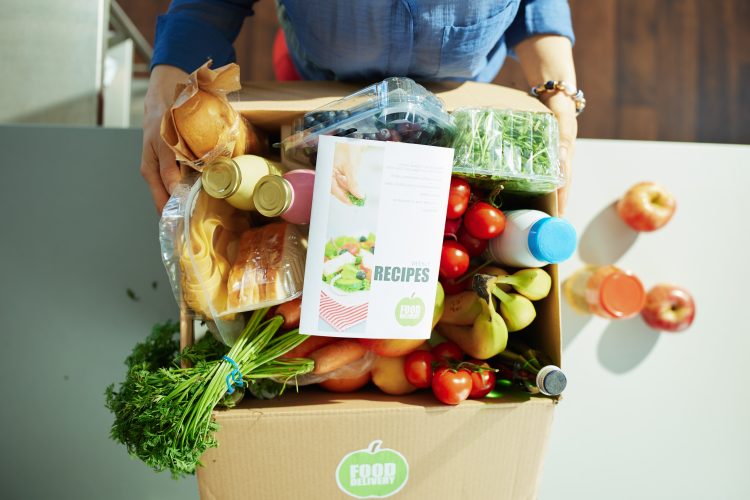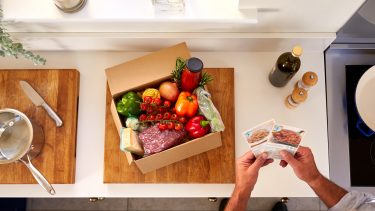Recipe boxes – 10 years on
- Like
- Digg
- Del
- Tumblr
- VKontakte
- Buffer
- Love This
- Odnoklassniki
- Meneame
- Blogger
- Amazon
- Yahoo Mail
- Gmail
- AOL
- Newsvine
- HackerNews
- Evernote
- MySpace
- Mail.ru
- Viadeo
- Line
- Comments
- Yummly
- SMS
- Viber
- Telegram
- Subscribe
- Skype
- Facebook Messenger
- Kakao
- LiveJournal
- Yammer
- Edgar
- Fintel
- Mix
- Instapaper
- Copy Link
Posted: 26 April 2022 | Patrick Eve | No comments yet
How have recipe boxes changed in recent years and what has caused their increase in popularity? Patrick Eve, Chief Commercial Officer at Gophr, one of the UK’s largest same-day courier services, finds out.


It’s been barely a decade since the launch of both HelloFresh and Gousto, the Coke and Pepsi of recipe box brands (in no particular order…), but in that time the sector has revolutionised how people plan and shop for food to eat at home. In fact, data reveals that a majority of UK households have tried them out.
Due to the pandemic, demand has soared from consumers who came for the convenience but stayed for the meal inspiration and lack of food waste these brands offer. At HelloFresh (one of the grocery brands Gophr provides delivery services for) global revenue hit €6 billion (£5.1 billion) last year – up more than three fifths in 2020. UK-only Gousto, meanwhile, doubled its sales in 2020, and predicts its 2021 results (out in May 2022) will show “another strong year”.
Going premium and niche
Given the performance of these talismans, it’s not surprising that the number of players in the sector is surging, with exciting new concepts to tempt in diverse audiences. Joining other established names like Mindful Chef and Pasta Evangelists, many of the newer contenders are targeting increasingly specific markets. They include those focused on particular dietary requirements or choices, from keto to paleo, vegan to raw. Fresh Fitness Food is one brand that tailors a customer’s meal plans based on their exercise goals.
We’re also seeing brands that focus on unusual global cuisines and health concerns. FoodHak (a ready meal delivery service whose founder Sakshi Mittal was recently profiled in The Times) does both, by combining mostly Asian-inspired recipes with a meticulous focus on health. In a similar vein, Oja, which works more like an online grocer, specialises in African and Caribbean products.
This increasingly niche, often premium, direction of travel, catering to specific diets and preferences, is mirrored in UK home-delivery sales of organic food, which grew 13 percent last year to £559 million, while supermarket organic sales – despite being more than three times bigger – grew only 2.4 percent.
New entrants driving innovation
Interestingly, other kinds of food businesses are moving into delivery, driven both by opportunity and need. These include manufacturers and wholesalers providing a recipe box-style service to B2B customers.


Data has revealed that a majority of UK households have tried recipe boxes
Corporate caterers are pivoting to a hybrid model; in a well-timed move in March 2020, Compass Group UK and Ireland acquired food tech startup Feedr, allowing it to respond to home-working and later hybrid-working by delivering some meals to employees working from home.
Company bosses who are looking at new ways to build and maintain office culture in the context of new working practices are experimenting with delivering a piece of that culture into the home. Great-tasting food has always been a popular perk, so it makes sense.
One Fine Dine, which offers fine dining at (fine) restaurant prices, catered to the private jet industry by developing premium meals that just needed to be heated, before pivoting to deliver to both homes and businesses when its core business was hit by the pandemic.
Last autumn, Gophr worked with London’s famous River Café to help the iconic Italian restaurant launch a delivery service, including meal boxes as well as fresh ingredients and alcohol.
Premium price points demand impeccably planned delivery models
The high price points of many of the new meal delivery brands reflect the premium consumers place on products that meet their own specific needs regarding quality and convenience. They also have a pricing advantage: offering best-in-class, same-day delivery is expensive, but higher priced products make it easier to absorb some of this cost.
To justify those prices, however, the experience for the customer needs to be flawless. Delivery for a major operation like HelloFresh is a three-stage process:
- Trunking – packed boxes are taken in pallets by lorries to a distribution centre
- Cross-docking and sortation – dividing this up into a larger number of smaller vehicles
- Last mile delivery.
It is a logistical challenge for each of these to run smoothly, but an efficient delivery system will also include mechanisms to ensure that when delays happen earlier in the chain – as they inevitably will – steps can be taken to make up the time, by bringing in more drivers and re-optimising their routes.
If you’re new to delivery, plan, plan and plan again
It’s a bit more straightforward for an independent restaurant or specialist retailer delivering from a single store or location, but anyone looking to take this step for the first time should think carefully about which geographical areas they can or should cover. Also important for those taking the plunge, is what kind of delivery vehicles will be needed, and what cut-off times for changing orders and delivery windows you can realistically promise.


The high price points of many of the new meal delivery brands reflect the premium consumers place on products that meet their own specific needs.
You will need to decide how much communication to have with your customers, and make sure that if you’re working with a delivery partner, you are equipped to handle real-time updates on the status of deliveries and be able to pass this information on to the customer. Where possible, it’s a good idea to provide customers with the name and number of their courier via whatever tech interface is being used, as well as the option to pass on their own number to the courier.
Making delivery an experience in and of itself
It’s important for any brand playing in this space to give some thought to the ‘doorstep experience’, which might be the only tangible contact your customer has with another person in relation to their order. How do you want your item to look? For a restaurant, consider which elements of the customer experience is it important to replicate at the customer’s home. Do you want to include theatre of some kind? For an online pure play business, consider how you can use this interaction to improve the overall experience of your brand.
You may also like:
Consumers tend to remember and often complain publicly about a poor delivery experience, so it’s vital that before beginning a delivery trial, any business asks itself the right questions to make sure that all customer expectations are met and exceeded. But for food businesses willing to take the plunge, delivery offers a chance to grow and diversify while doubling down on their premium credentials. What’s not to like about that?
About the author
Patrick Eve is Chief Commercial Officer at Gophr, one of the UK’s largest same-day courier services with clients such as Hello Fresh, Co-op, Asda, Screwfix and Yoox Net a Porter. Prior to Gophr, Patrick spent four years as Managing Director of ZigZag Global, the returns and post-purchase specialist that helps retailers, such as Boohoo, THG and Superdry, to reduce the cost, waste and friction in eCommerce returns.
Related topics
Ingredients, New product development (NPD), retail, Supply chain, The consumer, Trade & Economy
Related organisations
Compass Group, Feedr, FoodHak, Fresh Fitness Food, Gophr, Gousto, HelloFresh, Mindful Chef, Pasta Evangelists, River Cafe









